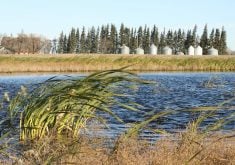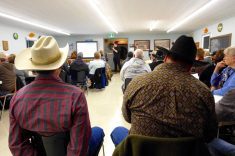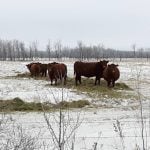After successive dry years, Manitoba Agriculture is warning farmers to be on the lookout for toxic plants on their grazing lands.
“In the years where we’ve had drought and we’re struggling to find enough good feed sources, animals end up foraging on species that they wouldn’t normally eat,” said Manitoba Agriculture weed specialist Kim Brown.
Why it matters: Rain in April and early May has eased short-term moisture concerns, but the Prairies may not be clear of drought worries later in the year.
Read Also

Glufosinate-resistant waterhemp found in U.S. Midwest
Kochia may also be on the road to Group 10 herbicide resistance, which would be a serious blow to Prairie farmers and canola growers, warns weed scientist.
Producers will have already heard livestock specialists urging patience on turnout. The typically advised threshold is around four leaves on regrowth, or around eight inches, according to planning resources from the Beef Cattle Research Council.
It’s about more than just overgrazing, however. Premature turnout also jump-starts toxicity risk, Brown cautioned.
“Some of the most poisonous plants grow and mature the earliest,” she said. “Turning them out too early will increase the likelihood of being grazed.”
Farmers should also take care not to send animals out when they are overly hungry. A hungry animal tends to binge on newly available forage.
“They may not be able to discern which are the good plants and which are the bad plants when they’re hungry. They just want to fill their stomachs,” Brown said.
If they’re already full before the move, the chance of them accidentally ingesting those weeds is lower.

The list
Manitoba Agriculture notes a number of toxicity risks for pastured livestock. Those include Western water hemlock, milk vetches, field horsetail, lupines, chokecherry, bracken fern and arrowgrass.
As well as acute problems, cows ingesting hemlock or lupines during pregnancy may birth calves with defects.
Other plants, while not toxic, can cause physical injury. “They can have sharp seeds, sharp awns or spines that work their way into the tongue, gums, eyes, nose or skin of the animal,” Brown said.
These plants include foxtail barley, downy brome, wild oats, common burdock and needle grass.
Western water hemlock
Of all the toxic or injurious weeds, however, the biggest concern is western water hemlock.
Identified by its narrow, sharp-toothed leaves, bulbous roots and umbrella-like clusters of small white flowers, “it is one of the most toxic plants for grazing animals that we have to worry about,” Brown said.

Western water hemlock (Cicuta douglasii) is part of the carrot family and is mainly found in low-lying, wet areas. It produces a poisonous oil called cicutoxin that is concentrated in the tuberous roots of the plant, although all parts of the plant, including stems and leaves, seeds and seed heads, are poisonous at some level.
“One bite of a root is enough to kill a cow,” Brown said.
It is also a particular poison risk in the spring. Not only does it emerge early and have enough toxin in the young leaves to be a problem, but soft ground makes it more likely that animals will rip up the whole plant, including the deadly root.
An animal that ingested the toxin would begin to show symptoms like frothing at the mouth, uneasiness, pain, violent convulsions and sudden mortality.
Hemlock mimics
There are a number of plants that can be confused with Western water hemlock. Some of those are other species of water hemlocks, which Brown noted are all toxic to some degree.
“Either way, when you see a plant like this, I think it’s just best to assume it’s water hemlock and take it from there.”
But there are also less poisonous lookalikes.
“There are lots of plants in this family that have a very similar type of flower head on them, and some of them really aren’t very poisonous at all,” Brown said.
Many plants in the carrot family have the same kind of seed head. Wild parsnip is one example frequently confused with Western water hemlock. It doesn’t contain the same toxin, but is problematic for its sap, which contains compounds causing extreme photosensitivity on exposed human or livestock skin, resulting in burns referred to within medical circles as phytophotodermatitis.
Brown urged producers to wear gloves when handling any suspected water hemlock plants.
















